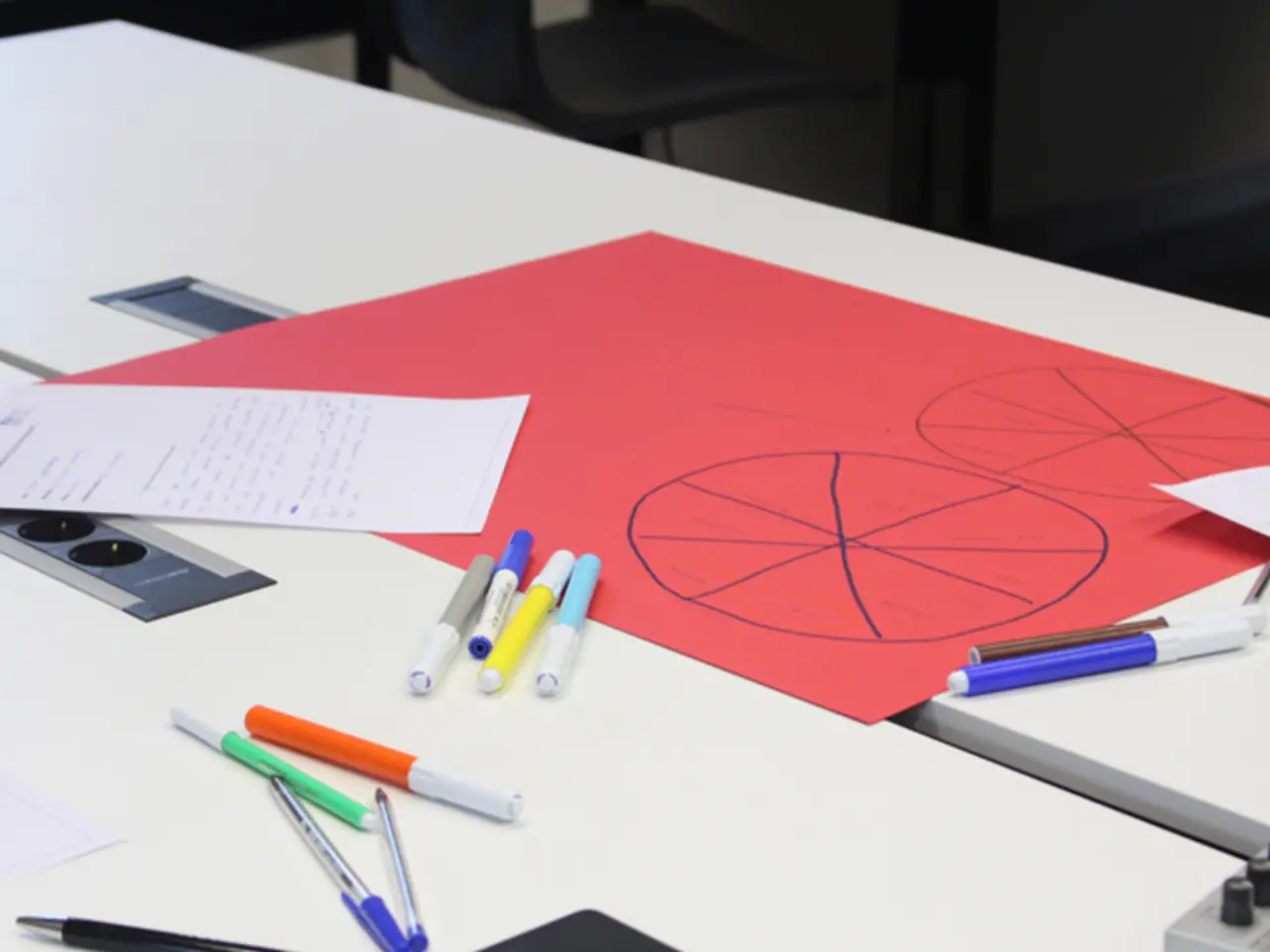Improving Lesson Strategy: Amplifying Learner Success through Instructive Feedback
In the ever-evolving landscape of education, the strategic use of assessment has emerged as a crucial tool for fostering student engagement, promoting continuous improvement, and enhancing educational outcomes. By harnessing the power of diverse, equitable assessments, educators can create a responsive and dynamic learning environment that supports student growth and agency.
Assessment, when employed effectively, enables educators to tailor their instructional strategies, ensuring alignment with learning objectives. This approach, often referred to as formative assessment, involves ongoing evaluations conducted during the learning process. Summative assessments, on the other hand, measure student learning at the end of an instructional period.
Fostering student engagement is a key aspect of education, and this can be achieved by implementing strategies that motivate and excite learners to take an active role in their education. This includes incorporating formative assessments, utilizing technology, and fostering a culture of assessment that values clear expectations and constructive feedback.
Creating a culture of assessment requires more than just implementing assessment practices; it involves integrating them as a regular part of the teaching and learning process. This approach, often referred to as building a culture of assessment in the classroom, fosters student engagement, encourages reflective practices, and supports continuous growth.
Technology significantly enhances assessment practices in education by providing diverse tools that streamline the evaluation process, facilitate instant feedback, and support various assessment methods. The integration of technology in the assessment process can help educators create personalized learning pathways and engage students in interdisciplinary assessments.
Effective assessment relies on various data collection methods, including surveys and questionnaires, observational techniques, and performance tasks. Surveys and questionnaires gather students' perspectives and experiences, enabling teachers to adjust their instruction based on direct feedback. Observational techniques offer insights into student engagement and behavior, providing real-time data that can significantly inform teaching practices. Performance tasks assess students' abilities through practical application of skills, allowing educators to evaluate not only knowledge but also creativity and critical thinking.
Peer review processes in education involve students evaluating each other's work and providing constructive feedback. This practice fosters a supportive classroom environment, enhances student understanding, and can even contribute to the development of critical thinking, collaboration, and active learning skills.
Diagnostic assessments are employed prior to instruction to gauge students' existing knowledge and skill levels. Aligning assessment with educational goals involves creating assessments that directly reflect the intended learning outcomes of a curriculum. This ensures that assessments are not only useful for evaluating student learning but also for informing instructional decisions.
The current best practices for using assessment data to inform teaching and create a responsive learning environment focus on equitable, collaborative, and iterative data use. These practices promote a responsive, equitable learning environment where assessment data deeply informs teaching strategies, supports student agency, and drives sustained improvement.
Key elements include employing a variety of formative and summative assessments, interpreting data collaboratively among educators and stakeholders, regularly revisiting and refining data definitions and collection methods, incorporating student self-assessment and reflection, documenting data insights and instructional adjustments transparently, using data not just for accountability but as a tool for targeted professional development, and sharing strategies and outcomes among educators to refine assessment skills and improve student outcomes collectively.
In summary, educators should use diverse, equitable assessments; engage in collaborative, structured data analysis; reflect and adjust regularly; involve students in self-assessment; and document their findings to inform instruction and professional growth. This approach ensures that data serves as an actionable, dynamic resource that enhances teaching and learning rather than just an evaluative measure.
Future trends in assessment practices include a focus on personalized learning pathways, the integration of technology in the assessment process, the concept of competency-based education, and the role of interdisciplinary assessments. Addressing the challenges associated with using assessment to inform teaching, such as the potential mismatch between assessment methods and student learning objectives, as well as the interpretation of assessment data, involves professional development programs focused on assessment literacy and fostering collaboration among educators to share best practices and insights.
The strategic use of assessment, technology, and reflective practices fosters a culture of continuous improvement, ultimately enhancing educational outcomes and preparing students for future challenges.
In the context of education and self-development, effective instructional strategies can be honed through the periodic review and refinement of formative assessments, which provide ongoing evaluation during the learning process (formative assessment). Professional development opportunities, such as assessment literacy programs, can help educators integrate e-learning tools, personalized learning pathways, and interdisciplinary assessments to further promote engagement and learning.
To create a culture of continuous improvement in an educational environment, it's essential to embrace a learning cycle that involves utilizing formative and summative assessments, interpreting data collaboratively, and adjusting teaching practices accordingly. This includes incorporating students into the self-assessment process, documenting data insights, and leveraging the data for targeted professional development, rather than viewing it merely as an evaluative measure.




